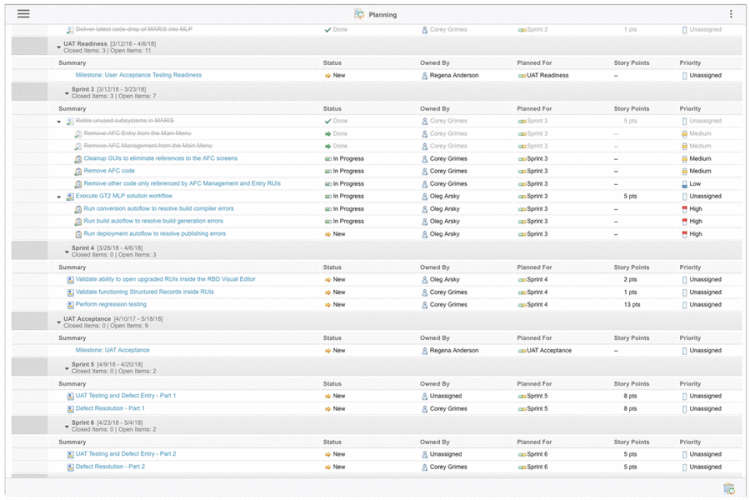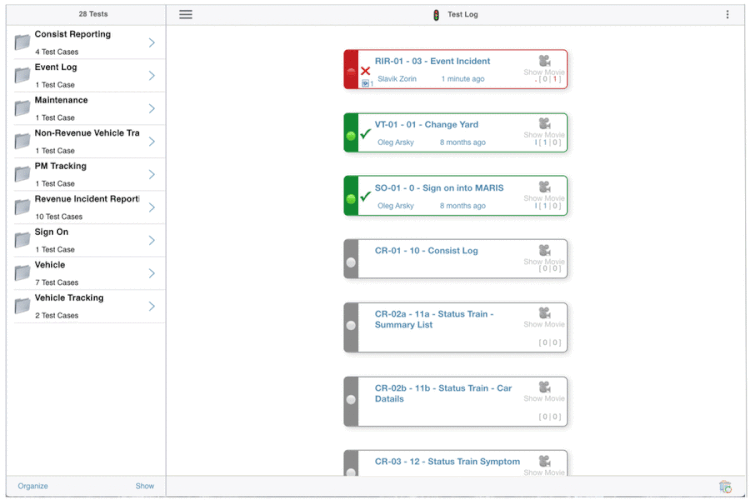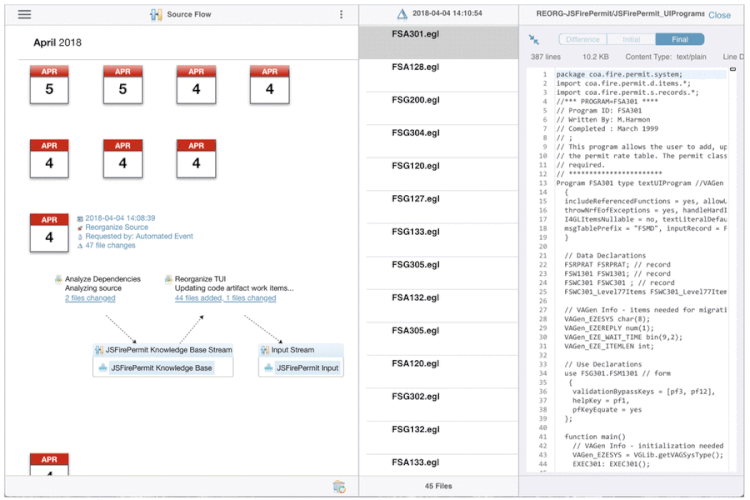Modernization Lifecycle Platform (MLP)
PaaS for 24×7 end-to-end management and execution of complex application modernizations
Manage. Collaborate. Accelerate.
Bring high productivity and a unified user experience to complex modernization projects.
Synchrony Systems helps companies transform legacy, in-house applications to modern technologies while preserving business-critical functionality. With our Modernization Lifecycle Platform, we provide an automated, reliable, and transparent modernization while ensuring 100% functional equivalency with no operational interruptions. And with our continuous upgrades, your in-house applications will never fall behind again.
No matter the source or target programming language, we apply the same, systematic modernization approach. The underlying modernization process is uniform and driven by automation, not by manual labor. Our agile, iterative methodology enables continuous development and maintenance of the legacy application without imposing any code freezes.

Continuous Integration
No code freezes! Ongoing changes to legacy applications coexist with ongoing modernization.

Automated Transformation
Rule-based driven code and UI transformation guarantees 100% equivalent functionality.

Full Transparency
Stakeholders see each and every activity in realtime, its results and its impact with complete traceability.
Unified. Scaleable. Extensible.
MLP comes powered with best-of-breed migration automation solutions for every legacy programming language and platform. MLP helps address the entire lifecycle of modernizations, while delivering added business value by powering the modernized applications with latest web, mobile and cloud capabilities. Unlike the traditional “rip-and-replace” approaches that are bogged down by complexity, MLP offers an agile approach that reduces the number of variables associated with modernizations and provides complete visibility into every step of the modernization process. This methodology ensures that modernization projects complete at a fraction of cost and time, and with reliable and predictable results as compared to a rewrite.

Modernization Lifecycle Platform (MLP) Features

Extensible Automation Workflows
Most of the modernization activities are managed and executed by an MLP workflow which shows all modernization lifecycle activities— automated, unattended processes that can run in parallel or sequentially depending on the Workflows constraints. MLP Workflow surfaces all project events and describes dependencies between autoflows where the result of one triggers the start of another, or when a new release of a migration solution triggers migration-related autoflows.

Source Code & UI Preview
MLP has a unified source code browser and navigation for any programming language. View any migrated source code artifact before and after the conversion. You can also preview migrated legacy terminal-based user interface such as 3270 or 5250 screens in any target Web 2.0 framework. You can use MLP as a learning platform for how to implement your application or legacy user interface in the new target programming language or modern web technology and platform.

Project Management
Project planning and tracking is not an afterthought when modernizations are run using MLP. Default templates are available for all types of modernization projects and are then further customized to accommodate activities that fall outside of the standards. Timelines provide a comprehensive view of specific, time-based metrics from project inception to completion, showing trends and projections for project management to ascertain project health and take action proactively. These are live, interactive dashboards that track all activities and issues fixed or reopened, changes made by whom and when and much more.

Defect Management
MLP has an integrated defect management capability enabling users to enter defects, associate and link defects with program artifacts, take screens shots for more descriptive information about issues found on particular screens, and much more. This establishes direct traceability between defects and the related code. When the migrated application is ready for testing, the automated build and deployment parts of the workflow are executed. Users can follow testing scripts or run custom testing autoflows inside the MLP workflow. These features are available in both the MLP Preview functionality and in the running application.

Test-Scenario Management
Test Logging is a subsystem inside MLP. It’s used for tracking an entire suite of test cases (or scenarios) which includes detailed descriptions as well as a complete test script represented as a list of individual, autonomous test steps. Each step is fully interactive, and users can pass, fail and assign defects that occur during to each test step. When all steps pass successfully (green checkmarks), the entire test case is considered as successfully completed. Test cases can be entered manually or imported en-mass into MLP.

Live Metrics, Analytics & Dashboards
MLP offers an extensive dashboard of metric widgets that cover every aspect of your modernization project. These widgets are live and interactive, giving you up-to-the-second status of your modernization project. Major categories of metrics include: a) Application source code b) Architecture and platform dependency analysis c) Planning and progress tracking of stories and tasks d) Defect status e) Progress of testing scenarios f) Workflow and source flow activity.

Migration & Dev Co-Existence
Supporting automated synchronization of changes between ongoing development and modernization is the cornerstone of what enables a continuous modernization to stay in lock step with continuous development. The MLP synchronization reruns the entire workflow and automatically merges differences found in the new code drop with the latest migrated code. There is no limitation to the number of code drops that are made during migration and the impact is relatively negligible for a typical modernization project in the rare cases when conflicts are are detected which require manual intervention.

3rd-Party Solution Integration
We are not going it alone. Any 3rd-party migration engines can be integrated inside MLP as part of its automation workflow. This capability is crucial to building a healthy and growing ecosystem of best-of-breed migration solution provider partners and extending the capabilities of MLP to other legacy platforms as well as modern target platforms and emerging technologies. This is equally beneficial to customers as it is to 3rd-party vendors.
See MLP in Action

777 West Putnam Avenue, Suite 300
Greenwich, CT 06830
+1 203-355-3636
Platform
Solutions
Company
© 2025 All Rights Reserved Synchrony Systems Inc. | Privacy Policy and Cookie Notice
